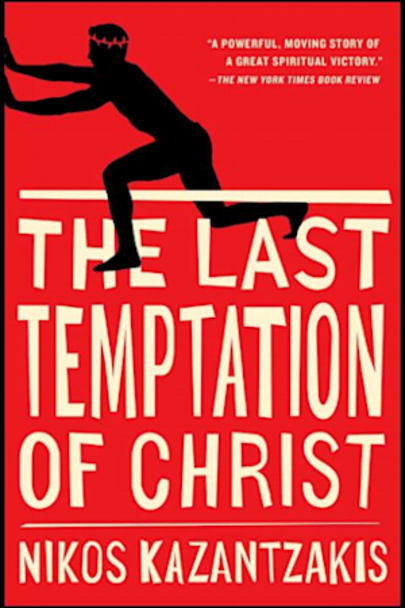The internationally renowned novel about the life and death of Jesus Christ. Hailed as a masterpiece by critics worldwide, “The Last Temptation of Christ “is a monumental reinterpretation of the Gospels that brilliantly fleshes out Christ’s Passion. This literary rendering of the life of Jesus Christ has courted controversy since its publication by depicting a Christ far more human than the one … the one seen in the Bible. He is a figure who is gloriously divine but earthy and human, a man like any other–subject to fear, doubt, and pain.
In elegant, thoughtful prose Nikos Kazantzakis, one of the greats of modern literature, follows this Jesus as he struggles to live out God’s will for him, powerfully suggesting that it was Christ’s ultimate triumph over his flawed humanity, when he gave up the temptation to run from the cross and willingly laid down his life for mankind, that truly made him the venerable redeemer of men.
“Spiritual dynamite.” –“San Francisco Chronicle”
“A searing, soaring, shocking novel.” –“Time ”
more



Iconoclastic depiction of Jesus written by a devout Christian. Nikos Kazantakis began life as a Christian on the island of Crete. He left home as a young man and wandered the world, soaking up knowledge from other cultures and religions as he went. He returned home — to Crete as a Christian. His influences were Buddha, Odysseus, Nietzsche , just to name a few.
The publication in 1955 of The Last Temptation by Nikos Kazantzakis led to a campaign by Greek Orthodox clergy to have Kazantzakis excommunicated as they considered the work blasphemous. It was published in English in 1960, the same year that the book was placed on the Catholic Church’s Index Librorum Prohibitorum (dismantled in 1966 following Vatican 2).
The Last Temptation follows the life of Jesus of Nazareth from the beginning of his public ministry. A carpenter in Nazareth, Jesus makes crucifixes for the Romans which are used to crucify Jewish zealots in rebellion against Roman rule. He is beset by voices and visions, and feels talons grasping his head, wings beating above him. He has no idea if these are sent by God or Satan. Following a crucifixion where Jesus has been reviled and attacked by the crowd for his work, he flees into the desert to a monastery, away from life and its temptations, away from his childhood friend, a rabbi’s daughter, Mary Magdalen who is now a prostitute. At the monastery he begins to understand God’s call to him and accept it despite his fears. On his return to Nazareth he begins his public ministry when he saves Mary Magdalene from being stoned, reflecting at the same time on her attackers and their own humanity and sinfulness.
The novel follows through some of the gospel stories including the sermon on the mount, the miracles including the raising of Lazarus, and on to Jesus’ final journey towards Jerusalem. Throughout this, Jesus continues to wrestle with temptations that would distract him from his calling and comes slowly to recognize himself as the Son of God and the saviour of humankind. The last and greatest temptation comes on the cross in the moment when Jesus calls to God, ‘Eli Eli…’ He is given a vision of the life he would have if he stepped down from the cross and took ‘the road of men’ – a life where he is reunited with Mary Magdalen and later marries Mary and Martha, the sisters of Lazarus, and fathers many children. But ‘Temptation had captured him for a split-second’, nothing more.
The Christ imagined by Kazantzakis is not serene in his knowledge that he is the Son of God and sure of his ministry but a ‘profoundly human’ man, sinless but beset with human frailty, struggling against temptations, not only of the flesh but of doubt about his destiny and divinity. In the Preface to the novel Kazantzakis says of Christ, ‘If he had not within him this warm human element, he would never be able to touch our hearts with such assurance and tenderness’. It is this human element, the flesh, that is at the heart of the novel, in struggle with the spirit; Kazantzakis sees them not as ‘enemies but rather fellow workers’ that should ‘rejoice in their harmony’. And so he presents a representation of Christ not just as true God but as true man.
Although The Last Temptation is often described as a historical novel, it does not attempt to meticulously recreate Roman occupied Palestine as we would expect with modern historical fiction. It is the mature outcome of Kazantzakis’s own wrestling with faith and the duality of flesh and spirit. Written in elegant poetic prose, it is more than a unique retelling of Christ’s life, it is also a compelling meditation on our humanity and the struggle for meaning in a disordered world. It is truly a masterpiece.